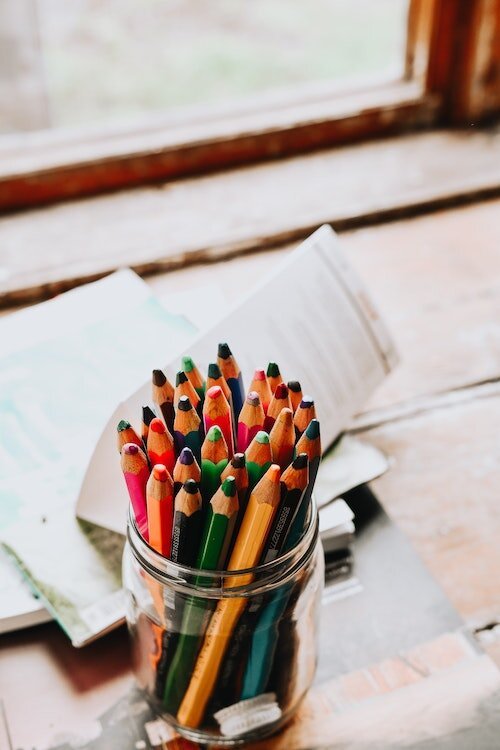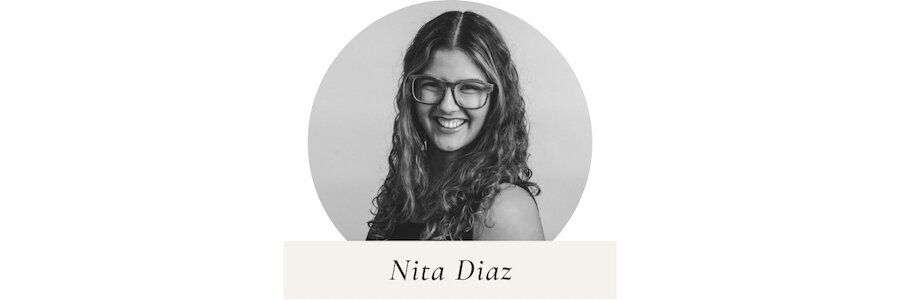
The Benefits Of Coloring As A Mindful Meditation
“Everyone is given a box of crayons in kindergarten. Then when you hit puberty they take the crayons away and replace them with dry, uninspiring books on algebra, history, etc. Being suddenly hit years later with the ‘creative bug’ is just a wee voice telling you, ‘I’d like my crayons back, please.’”
―Hugh MacLeod, “Ignore Everybody”
Finding Peace On Paper
I’ve always oscillated between structure and creative freedom. There’s a dreamy reassurance at that intersection, an inner voice telling me there’s a palette of possibilities within a framework.
That’s why I dusted off some old coloring books and pencils this past year. I’ve let myself get lost in the intricate shapes during many afternoons. Being able to play, aided by the direction from lines and patterns, has felt soothing during these unprecedented times.
Like many of the soul-care practices I’ve tried during the pandemic, coloring surprises me with its underlying beauty. What started as an effort to unplug has turned into an opportunity to engage in the present moment.
“What started as an effort to unplug has turned into an opportunity to engage in the present moment.”
After noticing the rewards, I’ve taken my coloring practice one step further, too. Going against my “I’m bad at this” nature, I’ve begun to experiment with other supplies on an untemplated sketchbook—fine markers and watercolors.
We worry so much about the past and future that we miss a great deal of “the now.” Coloring comforts my anxiety and tames the perfectionist mindset that often prevents me from creating without boundaries. Jumping into a blank canvas is one of the best decisions I can make to stay present while doing something I’m terrible at. And it’s become a mindful meditation.
The Vibrant Science Behind Coloring as a Mindfulness Practice
Some people hear “mindfulness” and immediately think of sitting on a meditation cushion. But is that all it is?
As Zen Master Thich Nhat Hanh explains in “Happiness,” we can embrace mindfulness anywhere. “We can do very much the same things we always do—walking, sitting, working, eating, talking—except we do them with an awareness of what we are doing.”
Mindfulness is less about the action and more about the state of living in the present moment. Arts and crafts like coloring can become mindful if we want them to, carrying the many benefits of this intentional practice.
“Coloring can be beneficial—even if we do it for a few minutes.”
When evaluating test anxiety in university students, studies show that coloring might reduce anxiety and increase a state of mindfulness. The Creative Research Journal suggests that coloring can lower symptoms of depression, considering it “an effective, inexpensive, and highly accessible self-help tool.”
Researchers from Hobart and William Smith Colleges have also found that coloring for 20 minutes may improve mood, reduce stress, and increase relaxation. And other studies note cognitive consequences, enhancing our ability to focus and develop original ideas to solve problems.
Although these studies have limitations (e.g., non-representative samples), they seem to agree on how beneficial coloring can be—even if we do it for a few minutes.
Tips for a Mindful Coloring Routine
1. Let Your Inner Child Play
As adults, we sometimes forget how exciting it was to paint on walls, get muddied from head to toe, and splash in rain puddles as kids. Haven’t you felt the urge to let go of control and—as cartoonist Hugh MacLeod notes—get your crayons back?
Ignite your creative spark with structured coloring, focusing on predetermined shapes (e.g., mandalas, plaid, geometric patterns). Then, let the five-year-old in you roam wild with free-form color without templates!
Get curious about color combinations, mix and match materials (pencils, markers, pastels, chalk). Throw in paper cuttings, stickers, scraps, or any other items you have handy. Celebrate the joy of creating and try to release any felt need to overthink.
2. Focus Your Attention
Direct your focus to the page. Ground yourself through your senses—watch the various tones coming to life, feel your pencil or crayon in hand, and hear the sounds they make on paper.
“Watch the various tones coming to life, feel your pencil or crayon in hand, and hear the sounds they make on paper.”
When your mind wanders, observe the thoughts and feelings that arise without judging them or trying to correct them. Find an anchor on your breath or a specific point in your drawing, and redirect your attention to coloring.
3. Leave Perfectionism at the Door
Color “just because.” Try not to worry about the reason or the outcome of your playtime. Concentrate on the present moment rather than the why.
If you’re pressed for time, schedule short coloring blocks throughout the week. You can also set a timer per session to help you stay mindful instead of thinking about what comes next. Start with a few minutes and adjust it as your practice progresses.
When fear and the itch for excellence arise, walk alongside them. Notice them and flow with ease. Aim to discover who you are when creating and dreaming outside of your expectations.
4. Find Inspiring and Sustainable Tools
Try this recycled Earth Day coloring book (because every day is Earth Day!), hand-drawn by women artists. Or go free-form with these gorgeous sketchbooks made from old waste paper, vegetable inks, and glues.
Instead of buying new crayons, get recycled ones, and learn how to recycle them at home with Bixley Baines’ coloring book. If you prefer colored pencils, go with recycled newspaper or plantable options to grow herbs, veggies, and flowers.
You can also opt for natural watercolors made with earth and mineral pigments and no toxic additives or petroleum.
“Coloring is a nourishing mindful activity that allows us to ground ourselves, focus our attention, and sit with what is.”
Coloring is a nourishing mindful activity that allows us to ground ourselves, focus our attention, and sit with what is. We could all use a bit of this magical awareness right now.
Have you tried coloring? What are your favorite mediums or tools? Let us know in the comments below!
RELATED READING
Nita Diaz is a bilingual freelance writer for hire, list-maker, and movement enthusiast. She combines her storytelling expertise and passion for self-care to craft health and wellness content. When Nita is not writing for her Coloring Book, she spends time journaling, enjoying functional workouts, and contemplating life upside down from her yoga mat. Follow her on Instagram and Twitter.
